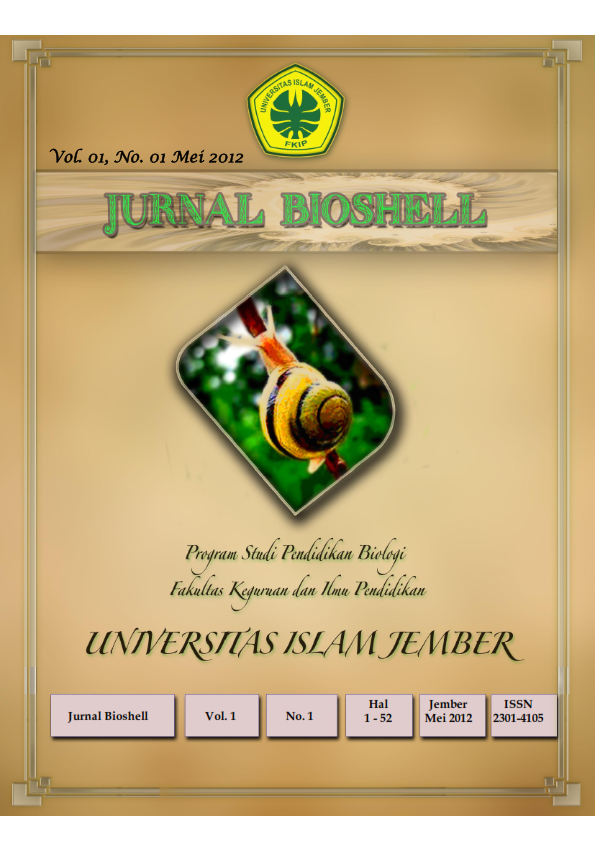UJI KUALITAS AIR BERDASARKAN MAKROINVERTEBRATA BENTIK DI SUNGAI PRONO PROBOLINGGO SEBAGAI INDIKATOR PENCEMARAN PABRIK KERTAS LECES PROBOLINGGO
Abstract
River represents as ecosystem of water which is very needed by all living organism and human being in their daily activities. These activities are possible to degrade the quality of water river. Benthic macroinvertebrates is one of the water animal that be used to monitor the quality of water. Besides benthic macroinvertebrates, measurement of water chemical factor often used as indicator for water quality. Research about influence quality of water on the river to existence of benthic macroinvertebrates in River of Prono Leces District of Probolinggo have been conducted in July-August 2010. The aim is that observing the quality of water, type and properties of benthic macroinvertebrates and the influence of water quality to existence of benthic macroinvertebrates. Method that used is plot method which is conducted systematically. Result of research indicates that pH, DO and BOD of Prono River are still good enough because it still fulfill standard quality of water specified by government. There are 11 types of benthic macroinvertebrates in all research station. H’ of benthic macroinvertebrates in all station below one (0.24 - 0.66). The result of analysis shows that a marked difference inexistence between station for the analysis of chemical factor and type variety index of benthic macroinvertebrates. Quality of water river of Prono does not give an effect to the existence of benthic macroinvertebrates.
Key Word : water quality, species richness , species of diversity, River of Prono













